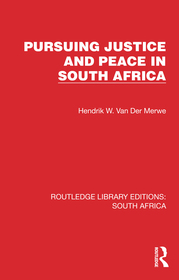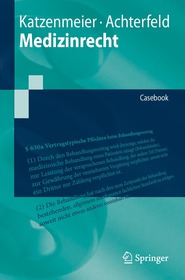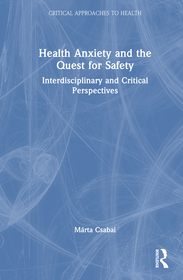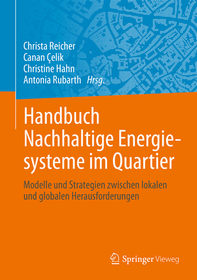
European Mail Armour
Ringed Battle Shirts from the Iron Age, Roman Period and Early Middle Ages
Series: Amsterdam Archaeological Studies;
- Publisher's listprice GBP 42.99
-
20 538 Ft (19 560 Ft + 5% VAT)
The price is estimated because at the time of ordering we do not know what conversion rates will apply to HUF / product currency when the book arrives. In case HUF is weaker, the price increases slightly, in case HUF is stronger, the price goes lower slightly.
- Discount 10% (cc. 2 054 Ft off)
- Discounted price 18 484 Ft (17 604 Ft + 5% VAT)
Subcribe now and take benefit of a favourable price.
Subscribe
20 538 Ft

Availability
Not yet published.
Why don't you give exact delivery time?
Delivery time is estimated on our previous experiences. We give estimations only, because we order from outside Hungary, and the delivery time mainly depends on how quickly the publisher supplies the book. Faster or slower deliveries both happen, but we do our best to supply as quickly as possible.
Product details:
- Edition number 1
- Publisher Routledge
- Date of Publication 1 December 2025
- ISBN 9781041178989
- Binding Paperback
- No. of pages520 pages
- Size 297x210 mm
- Language English 700
Categories
Short description:
For the first time, this book lays a solid foundation for the understanding of mail armour and its context through time. It applies a long-term multi-dimensional approach to extract a wealth of as yet untapped information from archaeological, iconographic and written sources.
MoreLong description:
Mail armour (commonly mislabelled 'chainmail') was used for more than two millennia on the battlefield. After its invention in the Iron Age, mail rapidly spread all over Europe and beyond. The Roman army, keen on new military technology, soon adopted mail armour and used it successfully for centuries. Its history did not stop there and mail played a vital role in warfare during the Middle Ages up to the Early Modern Period., Given its long history, one would think mail is a well-documented material, but that is not the case. For the first time, this book lays a solid foundation for the understanding of mail armour and its context through time. It applies a long-term multi-dimensional approach to extract a wealth of as yet untapped information from archaeological, iconographic and written sources. This is complemented with technical insights on the mail maker's chaîne opératoire.
MoreTable of Contents:
1 Introduction, 1.1 Previous research, 1.2 Research question and aims, 1.3 Cha&&&238;ne opératoire, 1.4 A multi-dimensional approach to material studies, 1.5 Scope, 1.6 Mail or chain-mail?, 2 The Origins of Mail Armour, 2.1 Suggested precursors, 2.2 Contested origins, 2.3 Earliest evidence, 2.4 Tracing the earliest contexts, 2.5 Further dispersal, 2.6 When, where and by whom, 3 Distribution and Archaeological Contexts, 3.1 Battlefields and accidental loss, 3.2 Iron Age mail, 3.3 The Roman Republic, 3.4 The Roman Principate, 3.5 Hybrid feathered armour, 3.6 Hybrid armour beyond the roman empire, 3.7 Late Antiquity, 3.8 The Barbaricum and beyond, 3.9 Mail for men, women and children, 3.10 Social access to mail outside the Roman Empire, 3.11 Centuries of archaeological evidence, 4 The Iconography of Early Mail Armour, 4.1 the iconographic evidence, 4.2 the 3rd century bc to the end of the roman republic, 4.3 early empire until the end of the 1st century ad, 4.4 the 2nd century ad, 4.5 the 3rd to 5th century ad, 4.6 development of mail armour design in iconography, 5 The Naming of Mail Armour, 5.1 Classical literature on armour, 5.2 Lorica hamata, 5.3 Other designations, 5.4 Simply lorica, 6 Decoration in Mail Garments, 6.1 Gold on silver, 6.2 Copper alloy elements, 6.3 Decorative origin, 6.4 Development and distribution, 6.5 Decorative trimmings, 6.6 Inserted patterns, 6.7 Contrasting rivets, 6.8 Decoration of hybrid armour, 6.9 Decoration of 'miniature mail', 6.10 Decorative hems, 6.11 Colourful Roman army, 7 Padded Garments, 7.1 the advantages and disadvantages of flexible armour, 7.2 himation, thoracomachus, subarmalis and cimmerian tunic, 7.3 textile and leather remains, 7.4 medieval analogy, gladiators and pteruges, 7.5 concealed by metal armour, 8 The Craft of Making Mail Rings, 8.1 The mail maker's process, 8.2 The manufacture of metal wire, 8.3 The manufacture of solid rings, 8.4 Unravelling the use of butted rings, 8.5 Loose rings, 8.6 The mail making workshop, 9 Weaving Patterns, 9.1 Four-in-one pattern, 9.2 Six-in-one pattern from tiefenau, 9.3 Pinched loop-in-loop pattern from Bertoldsheim, 9.4 Four-in-one pattern in hybrid armour, 9.5 Favourable characteristics, 10 The Construction of Mail Garments, 10.1 Current knowledge based on late mail from Europe, 10.2 Presence of constructional techniques in early mail, 10.3 Construction of early mail by working in the flat, 10.4 Construction of textile clothing and mail, 10.5 Construction of the coat with shoulder guards, 10.6 Mail with shoulder guards and textile clothing, 10.7 The development of mail armour through the ages, 10.8 Construction in cultural context, 11 Ring Characteristics, 11.1 The relevance of the seemingly irrelevant, 11.2 Ring size, 11.3 Direction of the overlap and ring types, 11.4 Cross-section of riveted rings, 11.5 Rivet characteristics, 11.6 Shape of the overlap in riveted rings, 11.7 Cross-section of solid rings, 11.8 Ring characteristics typology, 12 Final Considerations, 12.1 Insights, 12.2 Prospects, 12.3 Methodological potential, Bibliography, Database, Appendix 1. Catalogue of mail armour, Appendix 2. Catalogue of hybrid armour, Appendix 3. Catalogue of isolated finds of fasteners and fixtures, Appendix 4. Finds excluded from the database.
More








